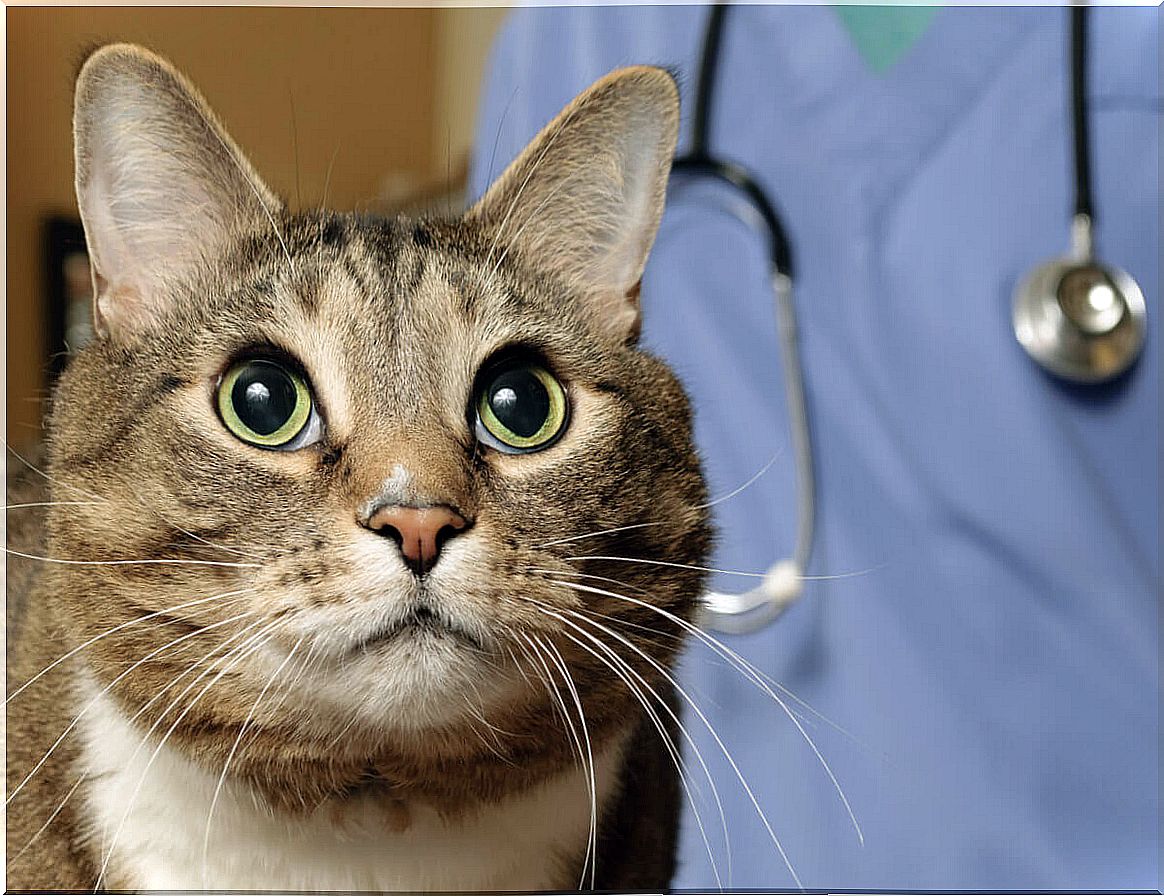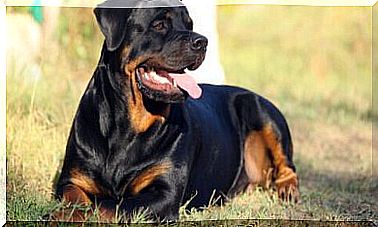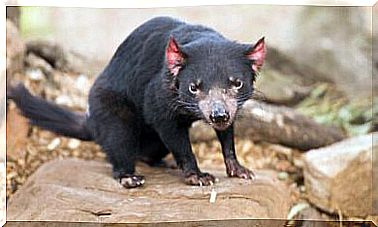Acromegaly In Cats: Symptoms And Treatments

Acromegaly is an endocrine disease that consists of excessive production of growth hormone (GH). The origin of this change in cats is the presence of a pituitary tumor. It’s a rare disease, but unfortunately it can be quite serious.
Signs of acromegaly are usually detected by the presence of other diseases. In that case, it could be because of insulin resistance in a diabetes treatment. The definitive diagnosis is confirmed by imaging and blood levels of certain hormones.
Acromegaly in cats
Feline acromegaly has the same origin as in other species (except in the case of dogs): a lesion in the anterior pituitary or an adenoma responsible for dysregulation in the production of GH, the growth hormone.
Growth hormone is secreted by the pituitary from the stimulation of another precursor hormone, growth hormone-releasing hormone, which is produced in the hypothalamus. The secretion of this hormone is inhibited by another hormone, somatostatin, which is also produced in the hypothalamus when GH levels are high.

Growth Hormone Effects
Growth hormone has effects on metabolism, as its excessive production affects the animal’s physiology. On the one hand, it stimulates hepatic glucose production, lipolysis and increases lipid oxidation.
Therefore, an excessive amount of this hormone results in persistent hyperglycemia that generates a state of hyperinsulinemia – the presence of a large amount of insulin in the blood – to neutralize it. Excessive insulin levels lead to glucose intolerance. Thus, insulin resistant diabetes is a sign of acromegaly.
In addition, together with growth hormone, the hormone IGF-1 (Insulin – like Factor -1) is also secreted, which stimulates the proliferation of various tissues. Morphological changes are also another sign of acromegaly: organomegaly, limb deformity, weight gain and other characteristic symptoms.
Symptoms in cats
According to statistics, male cats around 10 years old are more prone to acromegaly, but no differences were observed between the different breeds of felines. Some of the most common symptoms are:
- Insulin resistance associated with the usual signs of diabetes mellitus: polyuria, polydipsia, changes in appetite and weight and other events.
- Weight gain that cannot be explained by the tutor.
- Cardiovascular symptoms : acromegaly can lead to the development of hypertrophic cardiomyopathy.
- Morphological changes: abnormal enlargement of certain organs (organomegaly). Face enlargement is also common.
- Respiratory noise.
- Undershot: The jaw appears to protrude from the mouth.
- Accelerated nail growth.
- Lameness of one or more members.
- Nervous or behavioral signs.
Is there treatment for acromegaly in cats?
Currently, there are several types of treatment for cats with acromegaly. We will introduce them in the following lines.
Surgical treatment
The surgery consists of hypophysectomy, that is, the removal of the pituitary together with the tumor causing the acromegaly. It is a complicated operation that is usually only performed in highly specialized centers by specialist surgeons.
Because of the difficulty of the surgery itself, the condition of the animal and the post-operative care it requires, it is a risky procedure, but it can have very good results.
In 2012, the UK’s Royal Veterinary College (RVC) performed the first successful hypophysectomy surgery to treat a cat with acromegaly. So far, in 2019, the most qualified professionals have already surpassed 100 surgeries performed.
radiotherapy treatment
It is the most used method for cats with acromegaly. Through radiotherapy, tumor extension is controlled while insulin requirements are reduced. However, with this treatment, it is not possible to normalize growth hormone levels in the same way as with hypophysectomy.
Furthermore, its unavailability, costs and repeated need for anesthesia represent a considerable inconvenience for the owners of sick cats. Very specialized institutions are needed to carry out this type of treatment.
drug administration
It consists of the administration of somatostatin analogues and aims to reduce insulin requirements in treated cats. In parallel with this treatment, monitoring of the size of the pituitary and growth hormone concentrations is carried out.

If the cat’s owner decides not to follow any of the above treatments, he or she will have the option of palliative treatment to relieve symptoms. Administering high doses of insulin twice a day can combat acromegaly relatively effectively. However, considering the amount of insulin to be administered, this option can be as expensive as the previous ones.
Furthermore, combating insulin resistance can only be considered when there are no nervous signs associated with the pituitary tumor. The other symptoms that can arise from acromegaly should also be treated palliatively.









